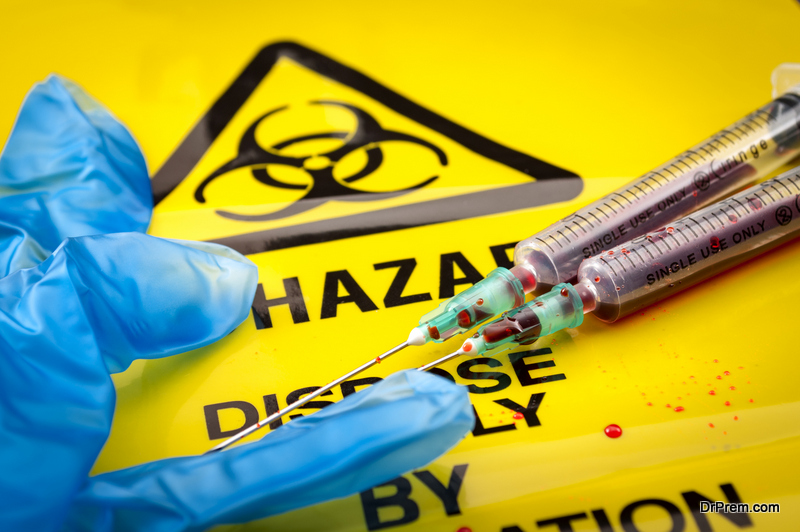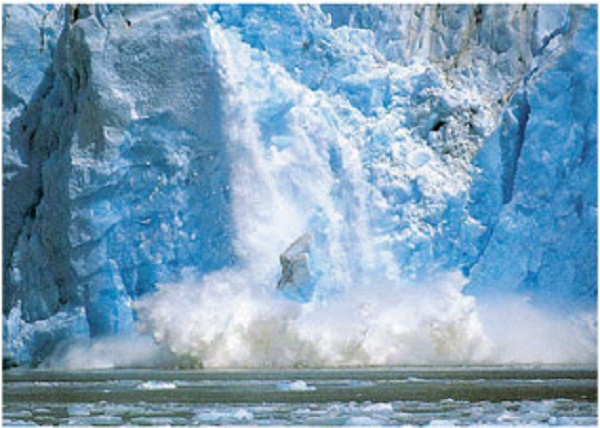All waste which is dangerous to humans and the environment is called hazardous waste. It can be either solid or liquid, sludges or gases. Hazardous waste has to be treated carefully and thrown carefully too. Pesticides, cleaning fluids, e-waste, janitorial supplies, building materials have to be disposed off in the proper manner responsibly or else it will harm people, plant and animal life, by polluting the water and contaminating the soil. Here are some methods by which you can dispose off hazardous waste:
How to dispose off hazardous waste
1. Reduce amount of hazardous waste produced
 If you are the owner of an industry which produces hazardous waste, then the first step should be to reduce the amount of toxic waste produced at your facility. There are a few ways which you can do this, the simplest being to replace hazardous material with harmless, non-hazardous material. Rethink the method of production and check to see if some operating or manufacturing processes can be changed so as to produce least amount of harmful waste.
If you are the owner of an industry which produces hazardous waste, then the first step should be to reduce the amount of toxic waste produced at your facility. There are a few ways which you can do this, the simplest being to replace hazardous material with harmless, non-hazardous material. Rethink the method of production and check to see if some operating or manufacturing processes can be changed so as to produce least amount of harmful waste.
Other ways to do this is the training employees to handle and manufacture your product in the proper way. You could revamp your equipment as efficiency also reduces waste.
Find out if other companies can use the hazardous material generated, which could be paint, cleaning products and pesticides. But you do have to dispose of radioactive material in the most suitable way.
In your home and office, you can switch to environment friendly cleaning materials, paint, and try to reuse and recycle everything you can. Use warm vinegar or hot water to unclog drains. To clean countertops, use baking soda and steel-wool. Make your own pot-pourri of dried flowers and orange peel and avoid toxic sprays to freshen the home.
2. Sign up for toxic waste collection
Once you have taken all the measures to reduce the toxic waste produced, you will still be left with some amount of hazardous waste. In order to dispose off hazardous waste, you should check to see if there is a pick-up for toxic waste with your trash collection company. They will probably ask you to separate trash, for used batteries, containers for liquid waste, and syringes have to be disposed of separately. Never mix the regular garbage with toxic waste.
3. Do not throw liquid waste in the drain
 If liquid waste is thrown into the toilet or the drain, then it might end up polluting water bodies. So dispose off hazardous waste in the trash which will be picked up and disposed off properly in injection wells underground.
If liquid waste is thrown into the toilet or the drain, then it might end up polluting water bodies. So dispose off hazardous waste in the trash which will be picked up and disposed off properly in injection wells underground.
4. Find a drop-off point/facility
One of the disposal methods is to find a facility where you can drop off the waste. There would be points mentioned in government websites and a day of week assigned when you can dispose of the waste, such as motor oil, household toxic waste, paint and so on.
5. Mail-kits
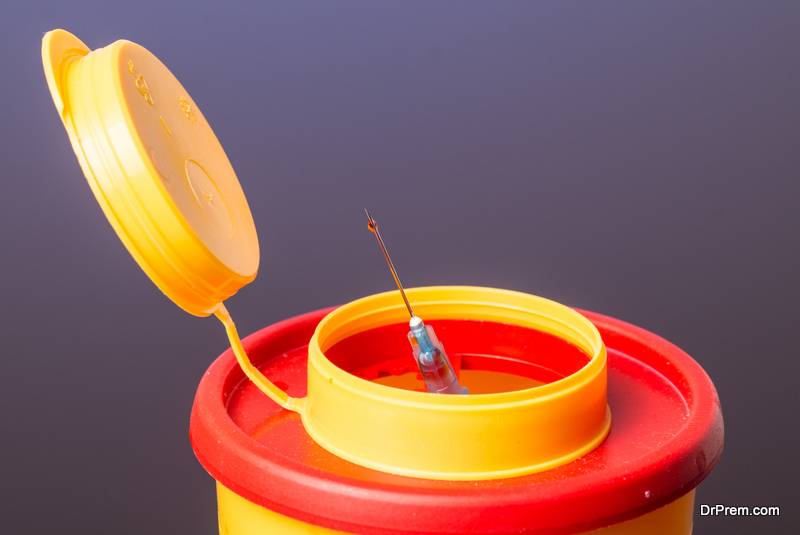 One of the best ways to dispose off hazardous waste is to contact the waste management company and ask for a mail-in kit. You would have to inform the company about the kind of toxic waste to be disposed off, and they will send you the appropriate bag for it.
One of the best ways to dispose off hazardous waste is to contact the waste management company and ask for a mail-in kit. You would have to inform the company about the kind of toxic waste to be disposed off, and they will send you the appropriate bag for it.
Methods of hazardous waste disposal
Before hazardous material is disposed off, it has to be treated to render it less toxic.
1. Treatment of toxic waste
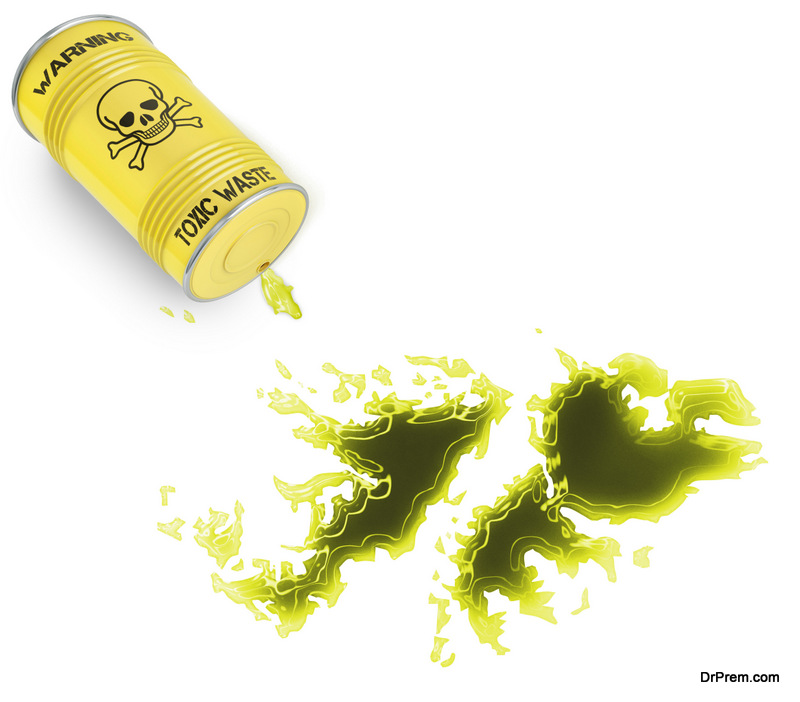 Hazardous waste is treated using thermal, biological, physical and chemical methods.
Hazardous waste is treated using thermal, biological, physical and chemical methods.
One of the thermal treatments is by incineration at extremely high temperature, which can detoxify as well as destroy different types of organic waste. The equipments used in the thermal disposal methods are fluidized-bed incinerator, rotary kiln, liquid-injection incinerator, multiple-hearth furnaces and liquid injection incinerator.
Chemical disposal methods consist of precipitation, oxidation-reduction, neutralization and precipitation.
Biological treatment is usually the preferred method of disposal of organic hazardous waste produced by the petroleum industry. One of the biological treatment is the method of landfarming. In this, the organic petroleum waste is mixed with the surface soil, and microbes which have the capacity to metabolize the waste are added. Some nutrients are also added. Sometimes, bacteria which have been genetically engineered are used. The land used for disposal is never used to grow forage or food crops. Sites which were previously contaminated can be stabilized using bacteria and the process is known as bioremediation.
The biological, thermal and chemical methods to dispose off hazardous waste change the molecules of the toxic material. Physical treatment is used to reduce the waste’s volume by concentrating or solidifying the waste. Evaporation, filtration and flotation methods are used. In solidification method, the waste is encapsulated in asphalt, plastic or concrete.
2. Landfilling
The suitable way of landfilling hazardous waste is by depositing the waste in secure landfills, which have a distance of at least 10 feet between the landfill’s bottom and underlying groundwater table or bedrock. These landfills are specially designed to have two ‘impermeable layers’ as well as leachate collection system. The leachate which is collected is sent via a pipe to the treatment facility.
Secure landfills must also have a groundwater monitoring system, which includes some deep wells around the site. This makes it easier to detect if the groundwater has been contaminated by the waste. If there is a leakage, then the wells are pumped and the polluted water is brought to the surface for the required treatment.
3. Deep well injection for liquid toxic waste
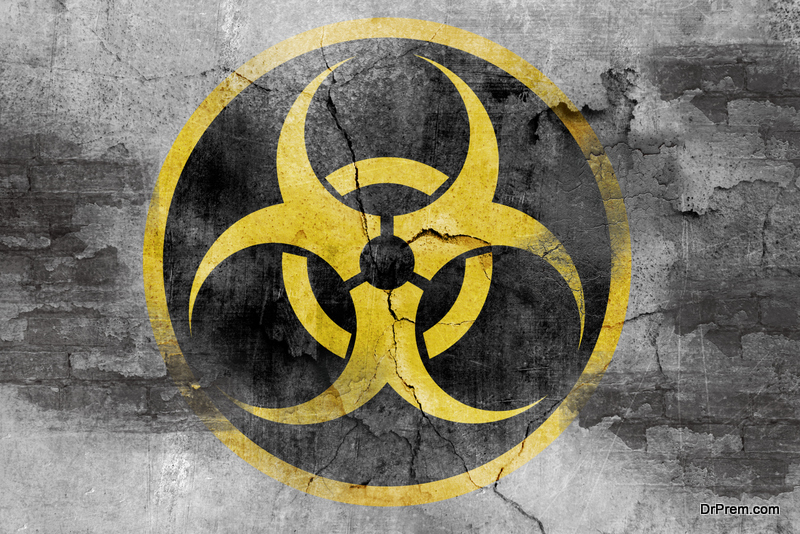 To dispose off hazardous waste which is in liquid form, the deep well injection method is used. In this method, the liquid waste is pumped via a steel casing and sent to a porous sandstone or limestone layer. Very high pressure is used to force the waste inside the fissures and pores of rock/s, and is permanently stored there.
To dispose off hazardous waste which is in liquid form, the deep well injection method is used. In this method, the liquid waste is pumped via a steel casing and sent to a porous sandstone or limestone layer. Very high pressure is used to force the waste inside the fissures and pores of rock/s, and is permanently stored there.
The injection zone has to be beneath a layer of rock/clay and can extend more than half a mile under the surface. It is an inexpensive method of disposal and does not require any pretreatment of the waste. There is a danger of leakage in this method.
Disposal of hazardous waste responsibly and using the correct material is important for environmental safety, so that humans, plants and animals are not harmed in any way by this toxic waste.


